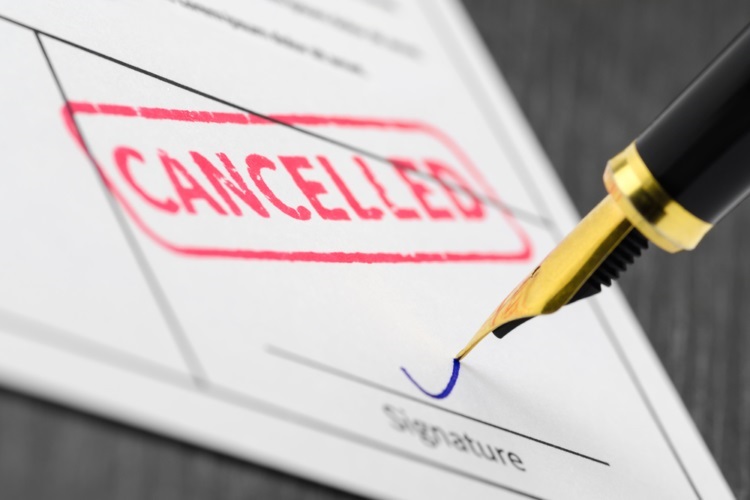How Can I Prevent My Registered Trade Mark From Being Cancelled or Removed Due to Non-use?

It is commonly assumed that once a trade mark is registered, it remains in force and can be renewed to maintain a registration for that trade mark indefinitely. While that’s true on the face of it, there’s an important principle of trade mark law that owners ought to be aware of. That is the principle of use it or lose it.
This doesn’t actually mean that an unused trademark will automatically be cancelled in Australia. And in Australia, trade mark registrations will continue to be protected indefinitely while they are being renewed without any inquiry into use by the government. However, we do still advise our clients to live by that mantra of use it or lose it? This is because a third party can legally challenge a trade mark registration if the trade mark has not been used for all of the goods or services covered by the registration.
If you, as the trademark owner, stop using your trade marks on any of the goods or services covered by the registration, not necessarily all of them, but any of them, your trade mark might be vulnerable to cancellation or removal and such an action could put you or your company in a vulnerable position. As far as the actual law is concerned, a third party can file an application with the government body called IP Australia, seeking to remove a trade mark from the register for non-use. If they believe it has not been used by the registered owner for the three year period that ends one month before filing that non-use challenge. A removal can relate to some or all of the goods or services that are covered by the trade mark.
There is a grace period during which your trademark registration is essentially immune from that kind of attack. That grace period used to be five years, however changed in 2019. If you filed your trade mark prior to the 24th of February 2019, there’s a five year grace period before any third party can challenge your trademarks for non-use. So for those trade mark owners, they’ve got five years within which to start using their trade mark for the goods/services claimed, if they hadn’t already done so in the beginning. However, if you filed your trade mark on or after the 24th of February 2019, that grace period is only three years. So you have to make sure that within three years of filing your trade mark, that you’re using it for all of the goods and services if you wish to protect yourself against potential challenges.
If your trade mark is challenged, you need to be aware certain criteria applies as to the use you will need to prove has occurred. For example, your use must have occurred prior to the non-use removal application is filed. It won’t assist you with you start using your trade mark immediately upon becoming aware of a non-use action. And indeed, you need to have used at least a month earlier. So effectively any use that occurs in the 30 days prior to a non-use action is ignored by the government.
What Use Do I Need to Show to Defend Cancellation of My Trade Mark?
The use has to be use as a trade mark, which goes back to the core definition of what a trade mark actually is. A trade mark is basically a ‘badge of origin’ or ‘brand name’. It’s the ‘sign’ that one trader uses to distinguish their goods and/or services from those of other traders.
It can’t just be using your trade mark descriptively and that’s mainly relevant in the case of trademarks that are a bit non-distinctive. So if you’re using your trade mark to describe your goods, as opposed to brand them, that would not necessarily be sufficient to show that you’ve used your trade mark. Another example of where that can be an issue is if your trade mark is actually your company’s name. If you’re using it just to identify your business and not to brand your goods or services, then that will not be sufficient either.
The use also has to be by the listed owner of the trade mark or with their effective control. This is often most relevant where there’s a third party that’s actually using a trade mark. So for example, say a parent company is the registered owner and their subsidiary is using the trade mark, you need to show that the parent company is controlling the use made by the subsidiary. Which is fairly straightforward. If it’s a wholly owned subsidiary, then there’ll be financial control. It can be a little bit more difficult to prove use where the user of a trade mark is a licensee, or indeed if there’s no license and there’s a third party, then it can be very difficult because you have to prove that the owner is exercising quality control over the goods or services. An example of this may be when a sole trader registers a trade mark in their name and later incorporates a company that goes on to use the trade mark but the ownership on the register is not updated. I can be difficult to show that the individual is in control in their personal capacity, which is separate to acting as a director of the company.
The simplest way to do that is to have a license agreement in place and to make sure you have quality control provisions, and that you actually enforce them. It’s no good to have a quality control provision in your license agreement that says you’re going to inspect in your licensees factory every six months, if you don’t do it because you’re not actually enforcing the agreement in a way that demonstrates that control.
This very issue has actually been the cause of the downfall of some trade marks unfortunately. So if you’re the registered owner and you’re using it or if your company owns the trade mark and it’s your company that’s using the trade mark then you don’t need to worry about this. But if there’s a difference between the registered owner and the actual user of the trade mark, it’s very important that the registered owner is controlling the use of the trade mark, whether that be financial control or quality control.
Another relevant point is that the trade mark shown in your evidence of use needs to be used in the same representation as you applied for, or one that does not alter the identity of the registered mark. So if you’ve got a logo, you need to make sure that’s the logo you’re using. If you change your logo, then it is not guaranteed that use of the new logo will defend a removal attack against that old logo If it’s a significant change, you’ll need to actually get a new trade mark to protect your new logo. And that is a mistake that happens quite often unfortunately.
Can My Trade Mark Be Cancelled or Removed Without My Knowledge?
It is possible, yes. It’s important that you keep your contact details up to date. This is more relevant for trade mark owners who are self filers rather than those that have engaged attorney services. If you have filed your own trade mark application then your address will be used for communication purposes. If your trade mark registration isn’t kept up to date with any changes that occur to your service address, for instance, if your office premises change, the Trade Mark’s Office is not going to look you up. They will either mail the notice to your address that is on record (and, if that fails to deliver they will not keep trying to find you), or will deliver it to your eServices account if you have one.
Is It Common for a Trade Mark to Be Removed for Non-Use?
Yes, they’re reasonably common. It usually occurs when one person has a trade mark application and it has problems such as earlier trademarks being cited as obstacles to acceptance of the mark. When a cited mark is preventing a client’s application from being accepted, we’ll look into whether the cited mark is being used for the relevant goods/services. If we find they’re not used, certainly we explain to clients that removal of the cited mark is an option.
If you do become the target of a non-use removal application you will have the opportunity to oppose the removal attack. From there, whilst the opposition process and proceedings can be quite complicated, you will essentially need to demonstrate that you have used your trade mark, as a trade mark, for the goods/services nominated in the removal application within the relevant period of time.
Will I Receive a Notification That My Application Is at Risk of Removal?
No. The trade marks office will not issue any ‘warnings’ that you have entered a time-frame where your trade mark is vulnerable. As noted above, they will issue a notice if another party has filed a removal application, however, commencing use on receipt of that notice will not be considered as evidence of use that will defend a removal attack.
We always let clients know at the time the trade mark is first filed or registered that you must use your trade mark, and if you don’t, it may become vulnerable to removal. It can be easy to forget that years down the track. So it can certainly be handy to have a trade mark attorney conduct portfolio reviews on a regular basis.
Removal Due to No Intention to Use the Trade Mark in Good Faith
The above article has discussed removal on the basis of non-use in a relevant three year period. It is important to note that the trade mark applicant must, on the date of filing, have the intention to use the trade mark in good faith for the nominated goods or services. The Trade Marks Office takes the filing of the application at face value to this point. However, it is possible for another party to seek to remove an application or registration at any time (e.g. there is no three year time-frame) if they believe the applicant had no intention to use the mark in good faith at the date of filing. These types of attacks are less common as they can be trickier to prove, but, should be noted in the context of discussing the removal of trade mark applications for non-use.

